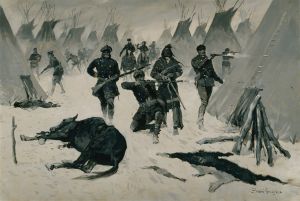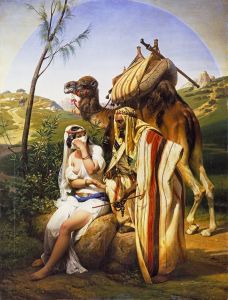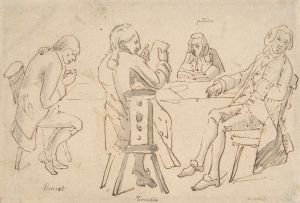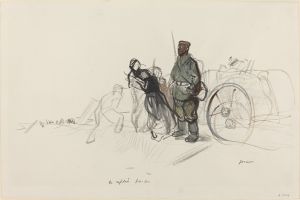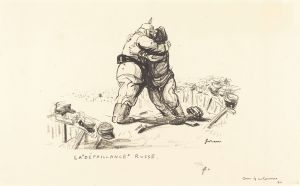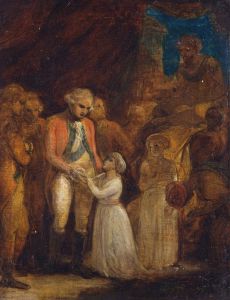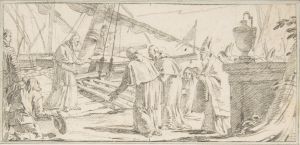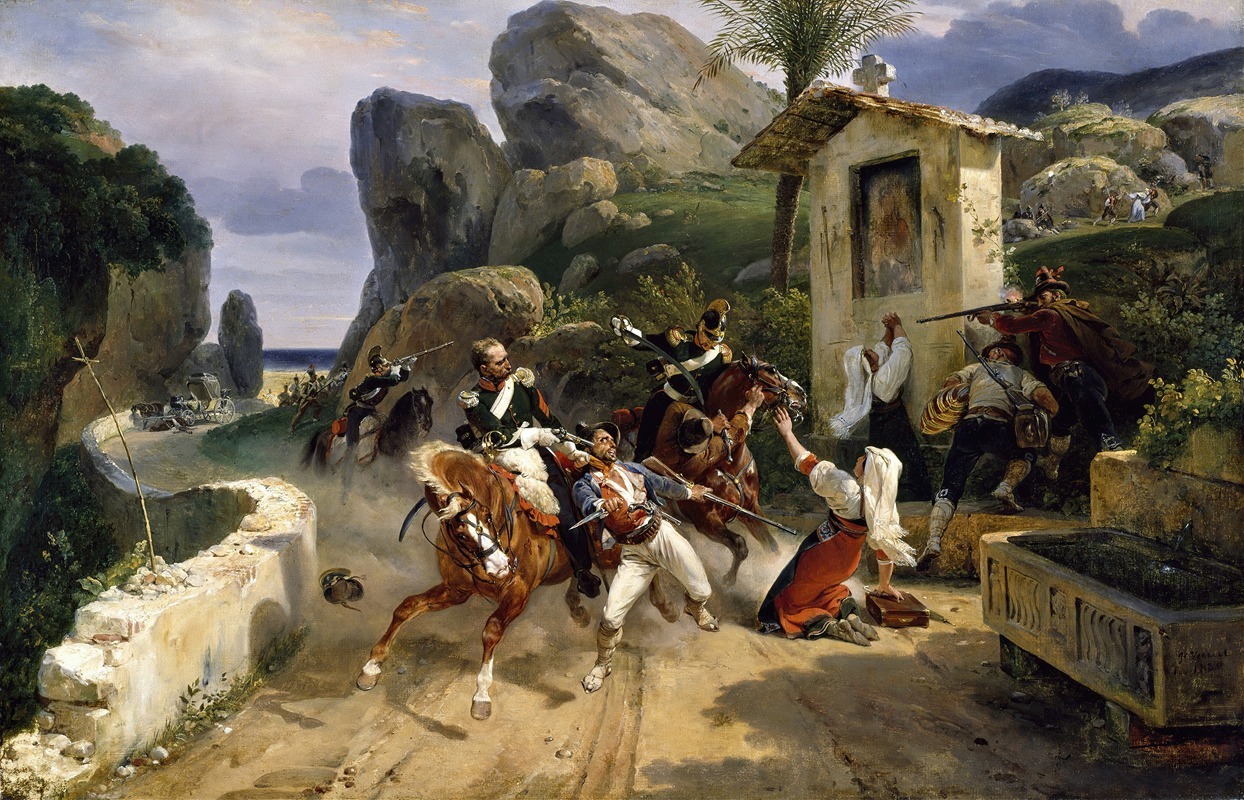
Italian Brigands Surprised By Papal Troops
A hand-painted replica of Horace Vernet’s masterpiece Italian Brigands Surprised By Papal Troops, meticulously crafted by professional artists to capture the true essence of the original. Each piece is created with museum-quality canvas and rare mineral pigments, carefully painted by experienced artists with delicate brushstrokes and rich, layered colors to perfectly recreate the texture of the original artwork. Unlike machine-printed reproductions, this hand-painted version brings the painting to life, infused with the artist’s emotions and skill in every stroke. Whether for personal collection or home decoration, it instantly elevates the artistic atmosphere of any space.
"Italian Brigands Surprised By Papal Troops" is a painting by the renowned French artist Horace Vernet, completed in 1831. Vernet, known for his dynamic and vivid depictions of military and historical scenes, captures a dramatic moment in this work, which reflects the socio-political climate of 19th-century Italy.
The painting illustrates a confrontation between Italian brigands and Papal troops. Brigands, often romanticized in art and literature, were groups of bandits or outlaws who were prevalent in Italy during this period. They were sometimes seen as rebels against oppressive regimes, while at other times, they were viewed as mere criminals. The Papal States, a series of territories in the Italian Peninsula under the sovereign direct rule of the Pope, maintained their own military forces to uphold law and order, which included dealing with such brigands.
In Vernet's painting, the scene is set in a rugged, mountainous landscape, typical of the Italian countryside where brigands often operated. The composition is dynamic, with a sense of movement and urgency as the Papal troops, clad in their distinctive uniforms, surprise the brigands. The brigands, caught off guard, are depicted in various states of reaction—some attempting to flee, others preparing to defend themselves. Vernet's attention to detail is evident in the rendering of the figures' expressions and postures, capturing the tension and chaos of the moment.
Vernet's work is notable for its historical accuracy and the way it reflects contemporary issues. During the early 19th century, Italy was a patchwork of different states and territories, each with its own rulers and laws. The Papal States, in particular, were a significant political and religious power. The presence of brigands was a challenge to the authority of these states, and their suppression was a common theme in the political discourse of the time.
The painting also reflects Vernet's broader interest in military subjects and his skill in depicting action scenes. Vernet was a favored artist of the French military and had a reputation for his ability to capture the drama and heroism of battle. His works often included detailed and accurate representations of military uniforms and equipment, which added to their authenticity and appeal.
"Italian Brigands Surprised By Papal Troops" is an example of Vernet's ability to blend historical narrative with artistic skill. The painting not only serves as a visual record of a specific historical moment but also offers insight into the broader social and political issues of the time. It remains a significant work in Vernet's oeuvre and a valuable piece for understanding the complexities of 19th-century Italian history.
The painting is part of the collection at the Louvre Museum in Paris, where it continues to be appreciated by visitors for its historical significance and artistic merit. Vernet's work, including this painting, played a role in shaping the public's perception of historical events and figures, contributing to the romanticized image of brigands in popular culture.





